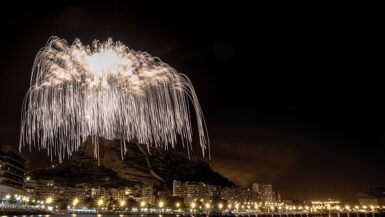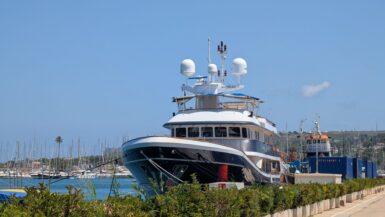Planning a trip to Spain’s Costa Blanca and wondering what all the fuss is about? You’ve come to the right place! I’ve spent years visiting this stunning stretch of Mediterranean coastline, and I’m excited to share everything you need to know about one of Spain’s most popular holiday destinations.

There really is something for everyone in the Costa Blanca, which makes it such as special place to visit. Whether you’re a family looking for safe beaches, a couple seeking a romantic getaway, or a group of friends ready for some serious fun, this region has it all.
What is the Costa Blanca?
The Costa Blanca, which translates to “White Coast,” stretches along Spain’s eastern Mediterranean coastline in the province of Alicante. The name comes from the white sandy beaches and whitewashed buildings that characterise much of the region.
This 200-kilometre stretch of coastline runs from Dénia in the north down to Pilar de la Horadada in the south, taking in some of Spain’s most beloved holiday destinations along the way.
Getting to the Costa Blanca
Alicante Airport is your main gateway to the Costa Blanca. It’s brilliantly located, with most resort towns just 30-60 minutes away by car or bus. The airport has excellent connections to the UK, with direct flights from major cities year-round.
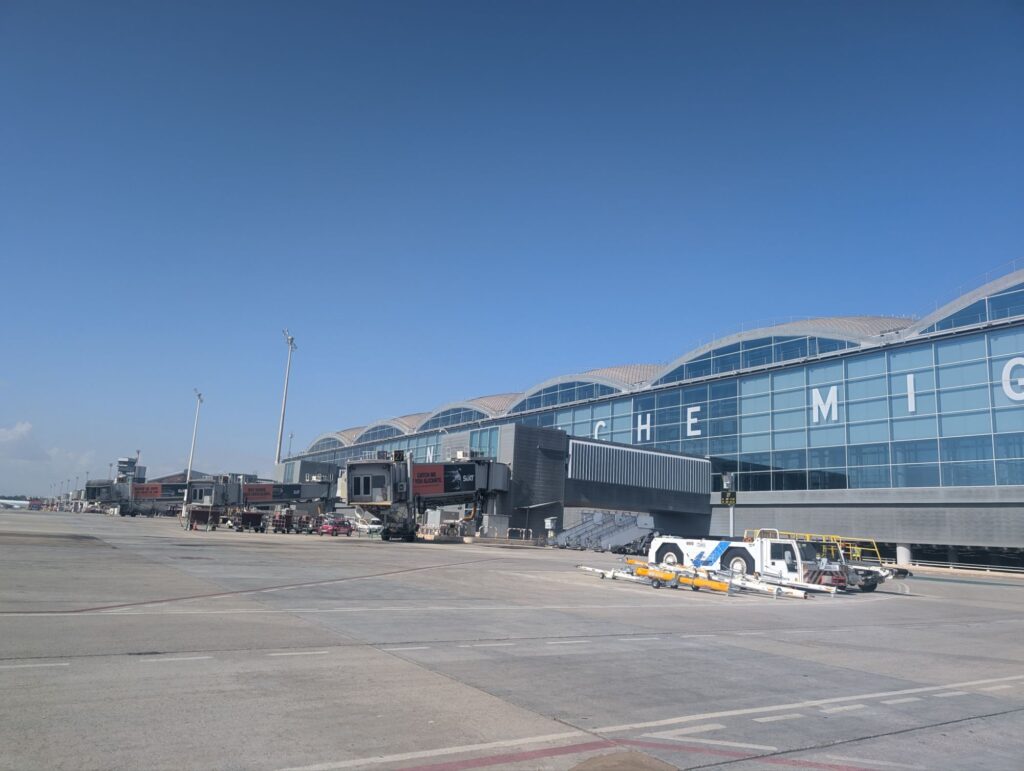
Valencia Airport is another option if you’re staying in the northern part of the Costa Blanca, particularly around Dénia or Javea.
Once you’ve landed, you’ll find plenty of transport options to get to your destination. You can find all of my existing guides here:
- Alicante Airport to Benidorm
- Alicante Airport to Calpe
- Alicante Airport to Dénia
- Alicante Airport to Villajoyosa
- Alicante Airport to Altea
- Alicante Airport to Moraira
- Alicante Airport to Torrevieja
Top destinations to visit on the Costa Blanca
Benidorm
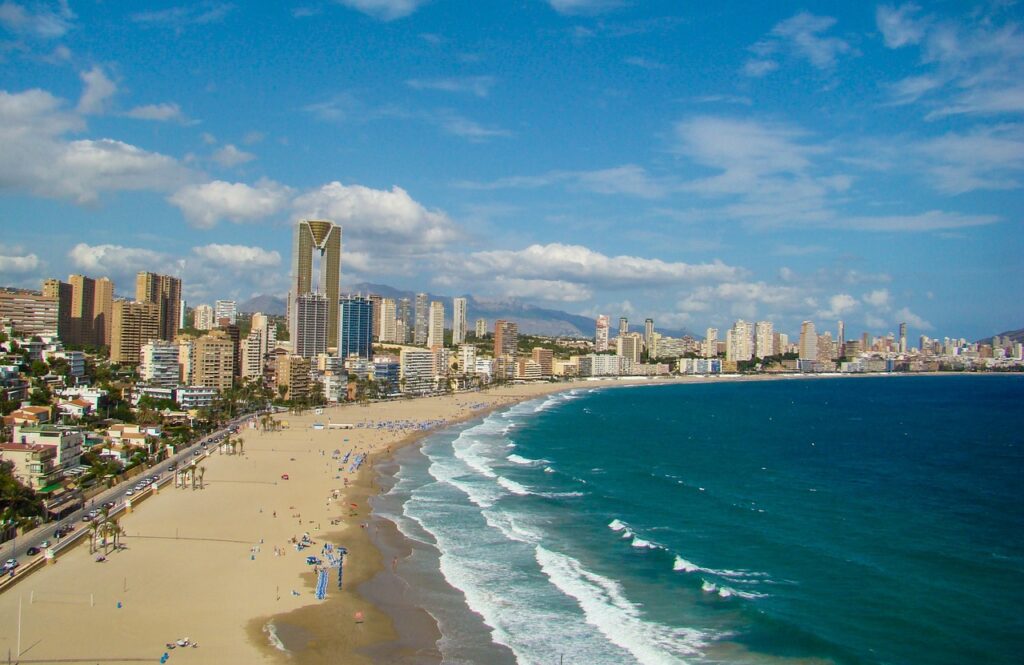
Let’s start with the big one! Benidorm is the Costa Blanca’s most famous destination, and for good reason. This resort town has transformed from a small fishing village into a Mediterranean Las Vegas, complete with towering hotels and non-stop entertainment.
What I love about Benidorm:
- Two fantastic Benidorm beaches (Levante and Poniente)
- Incredible theme parks like Terra Mitica and Aqualandia
- World-class entertainment at venues like Benidorm Palace
- Amazing value for money
- Always something happening 24/7
- Famous nightlife in the Benidorm English Square
Benidorm gets a bad reputation from some people, but I think it’s a brilliant place to visit as it’s perfect for families, groups of friends, and anyone who wants guaranteed sunshine and endless entertainment. Check out my complete guide to things to do in Benidorm for the full rundown of activities to book in the area.
Alicante

The capital city of the province is a proper Spanish city with a beach attached! Alicante gives you the best of both worlds – authentic Spanish life alongside beautiful beaches and a historic old town.
Don’t miss in Alicante:
- The imposing Castillo de Santa Bárbara overlooking the city
- The beautiful Explanada de España promenade
- Playa del Postiguet beach right in the city centre
- The fantastic food scene in the old town
- The Central Market (Mercado Central) – open Mon-Sat
- MARQ Archaeological Museum – excellent for rainy days
For a complete overview of what to do in the area, check out my guide to things to do in Alicante.
Calpe
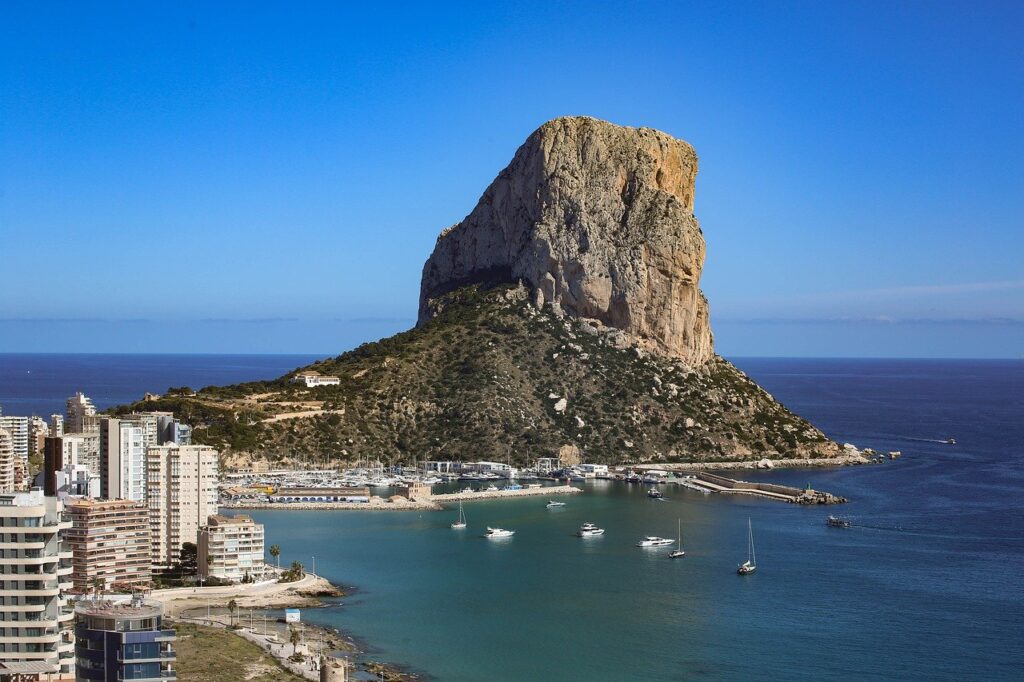
Calpe is famous for one thing above all – the massive Peñón de Ifach rock that juts out into the sea. This natural monument is one of the most photographed spots on the Costa Blanca.
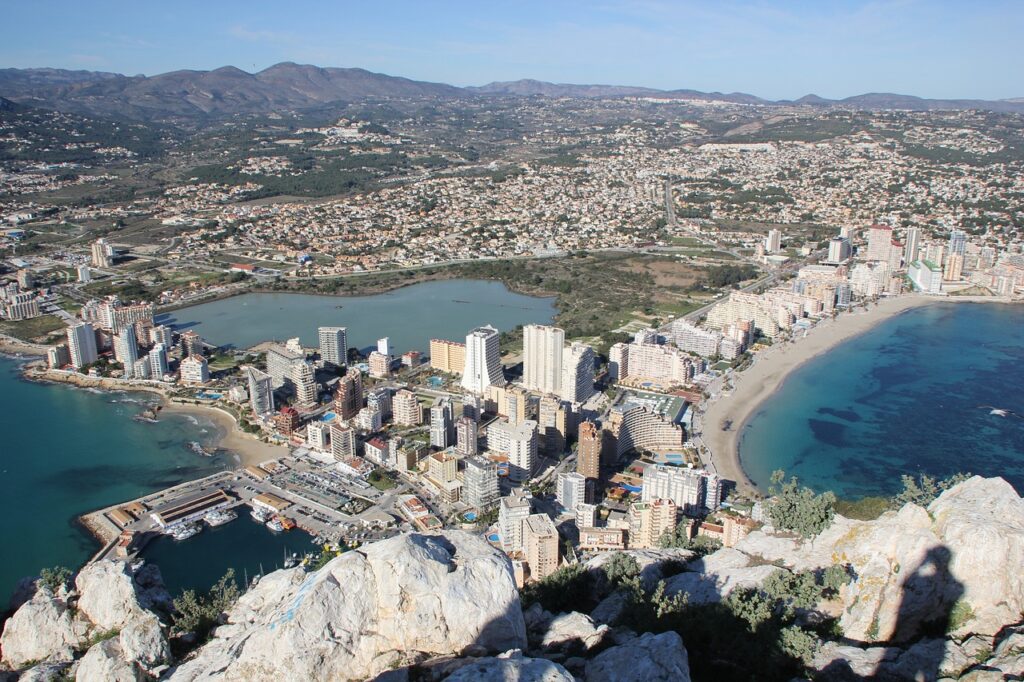
The town itself is lovely, with excellent beaches and some of the best restaurants on the coast. It’s particularly popular with families and those looking for a more relaxed pace than Benidorm.
Read my full guide to things to do in Calpe for all the details.
Altea
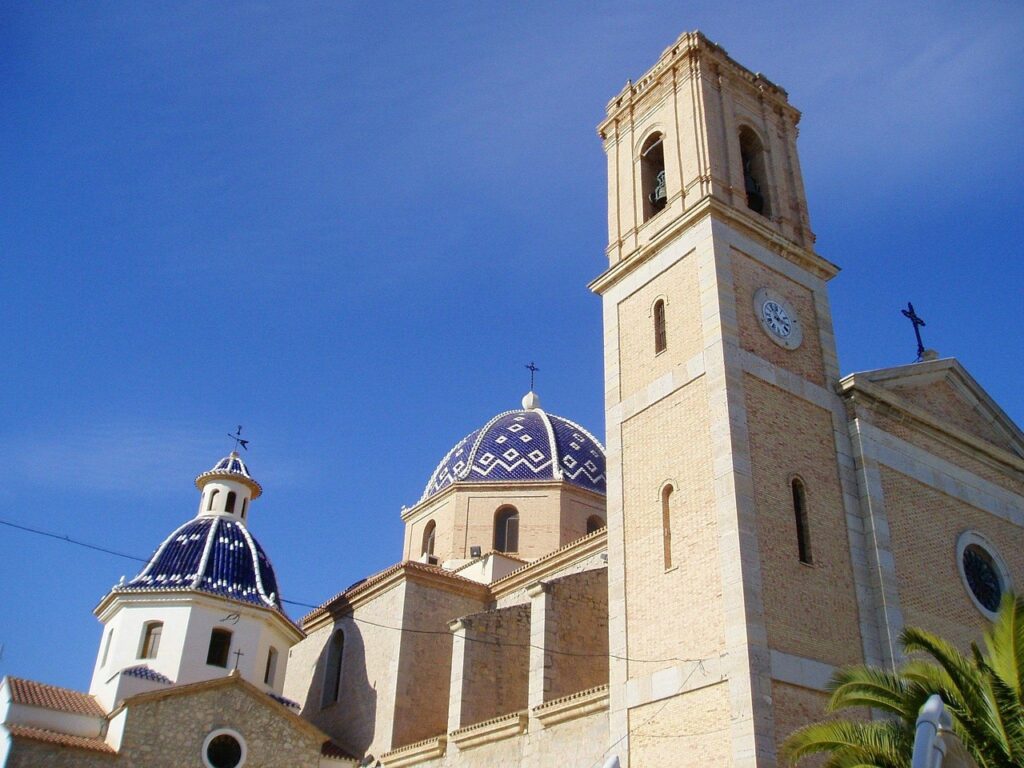
If you’re looking for something completely different, Altea is your answer. This hilltop town is known for its artistic community, stunning views, and charming old quarter with narrow cobbled streets.
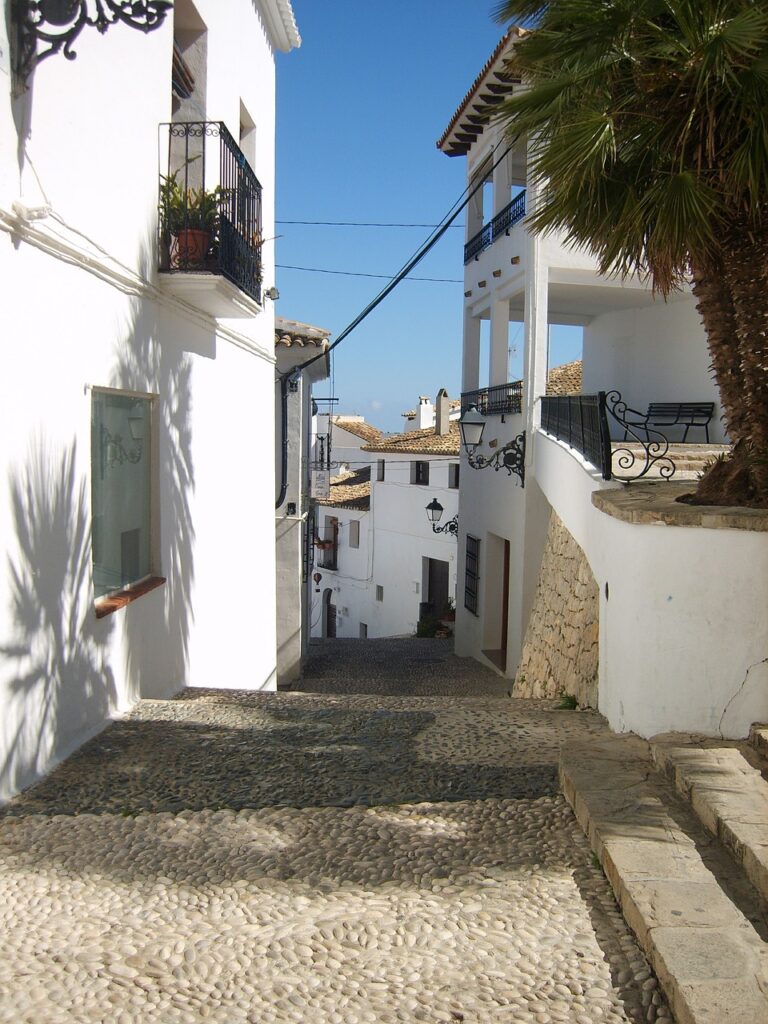
Altea attracts a more upmarket crowd and is perfect for romantic breaks or peaceful family holidays. The beaches here are quieter, and the whole atmosphere is much more laid-back.
You’ll find plenty of inspiration in my guide to things to do in Altea.
Villajoyosa
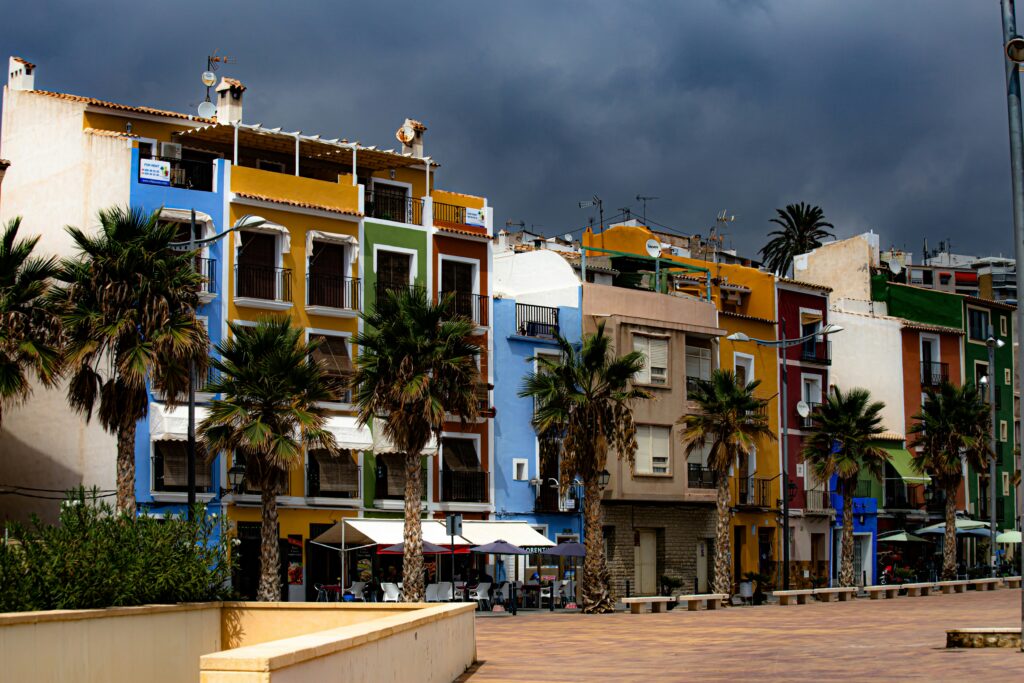
The “Joyful Town” is famous for its colourful houses along the seafront and its chocolate-making heritage. It’s a working fishing town that hasn’t lost its authentic Spanish character.
I love Villajoyosa for its real Spanish atmosphere and excellent seafood restaurants. It’s also home to the Valor Chocolate Museum, which is great fun for families. Check out my complete guide to things to do in Villajoyosa for more details.
Javea

Javea sits at the northern end of the Costa Blanca and offers some of the most beautiful scenery in the region. The town is built around a stunning bay, with the Montgó mountain providing a dramatic backdrop.
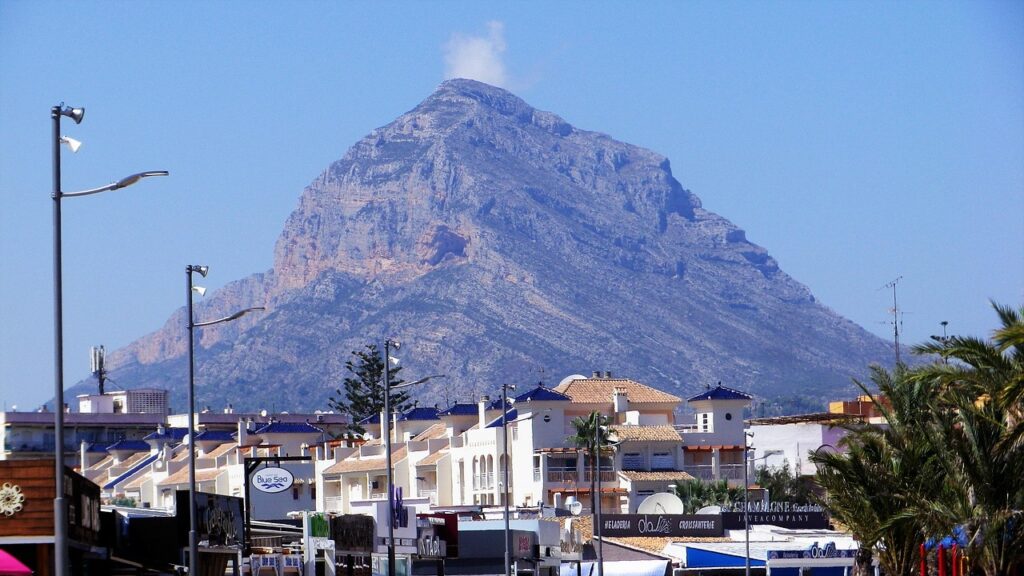
This is one of the more upmarket destinations on the Costa Blanca, popular with British expats and visitors looking for quality accommodation and dining. The beaches in Javea are absolutely stunning.
Planning your complete Costa Blanca adventure?
From theme parks to hidden beaches, mountain hikes to authentic tapas tours – discover everything this stunning Spanish coastline has to offer.
See all Costa Blanca activities 🌊Dénia
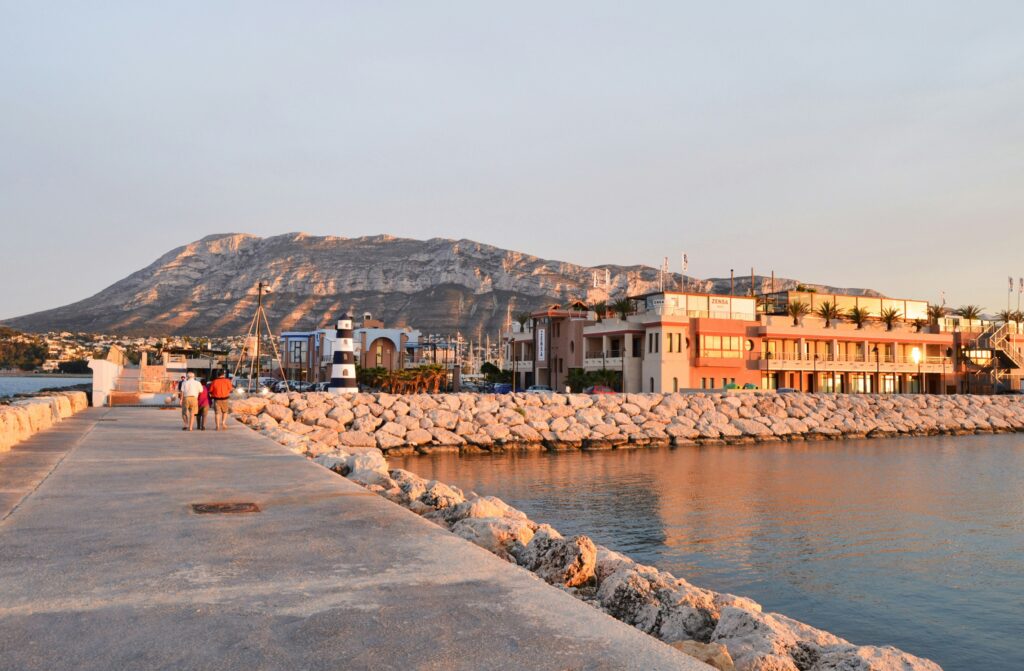
The northernmost resort of the Costa Blanca, Dénia is a proper Spanish town with a lovely old quarter and port. It’s famous for its gastronomy and was designated a UNESCO City of Gastronomy.
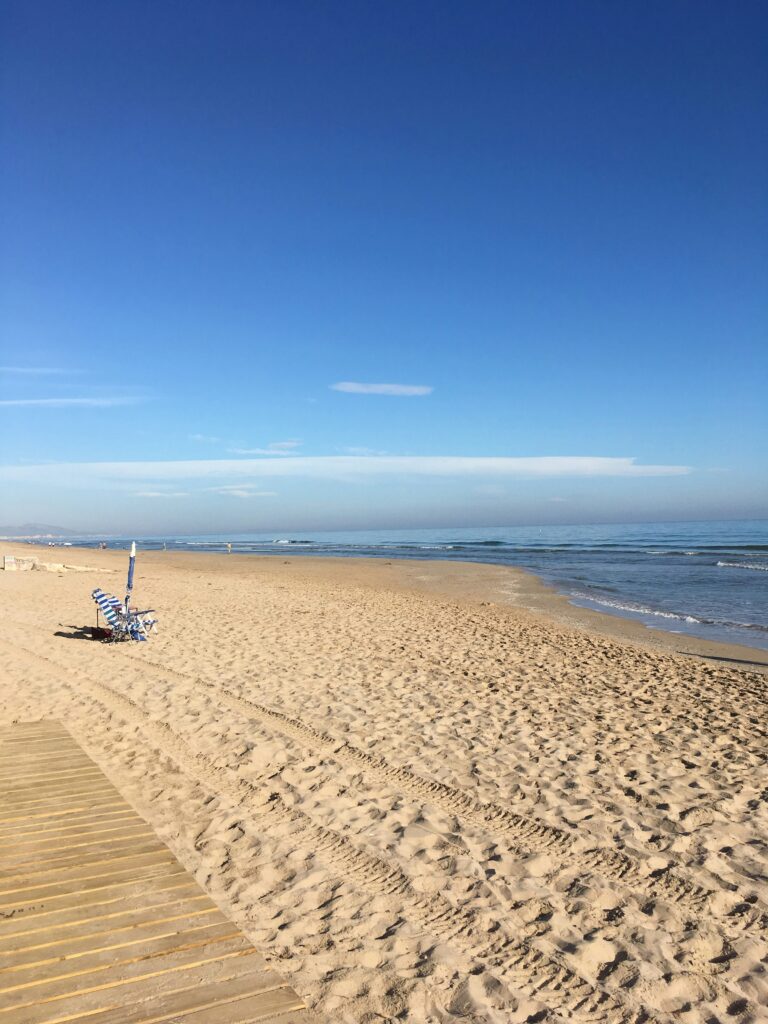
Denia’s beaches here are some of the best on the coast, and the town has a wonderful authentic Spanish atmosphere. You can read all about it in my guide to things to do in Dénia.
Moraira

Moraira is a smaller, more exclusive resort town that’s perfect for those seeking a quieter, more sophisticated holiday. The town has beautiful beaches and an excellent selection of restaurants and bars.
Torrevieja
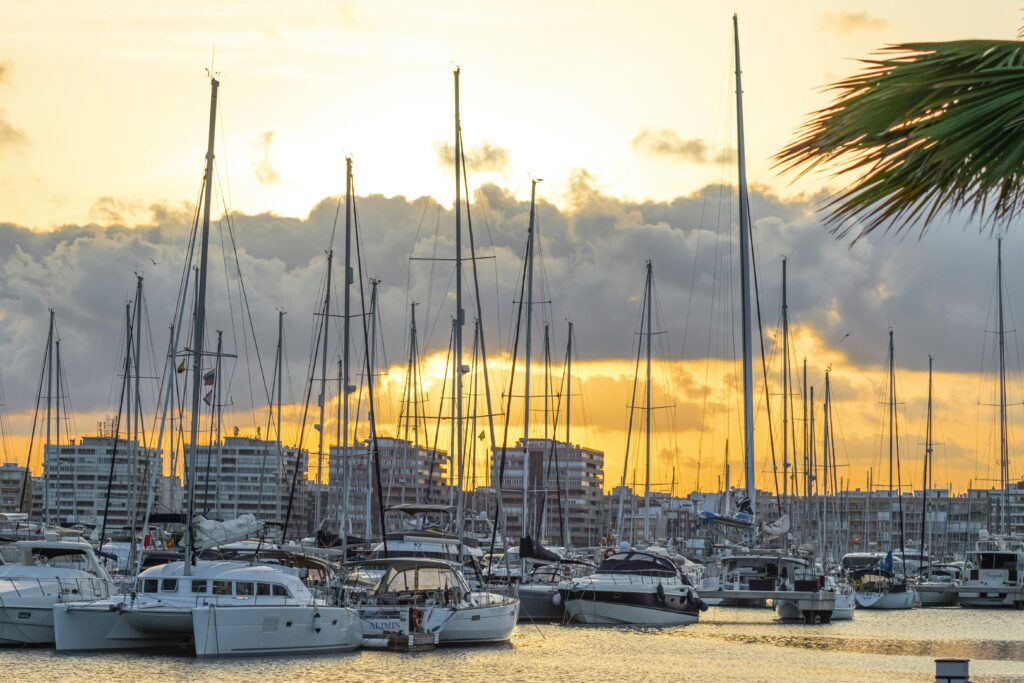
Torrevieja is famous for its salt lakes and fantastic beaches. It’s a popular destination for both Spanish and international visitors, with excellent amenities and a lively atmosphere. The salt lakes are particularly worth visiting – they’re a stunning pink colour!
Costa Blanca beaches
The beaches are what most people come for, and the Costa Blanca doesn’t disappoint. Here are my top picks:
Playa de Levante, Benidorm
The most famous beach on the Costa Blanca, Levante is a 2-kilometre stretch of golden sand that’s perfect for families. It gets busy, but the facilities are excellent.
Playa de Poniente, Benidorm
Quieter than Levante, this beach is great if you want the Benidorm experience without quite as many crowds.
Playa del Arenal, Javea
A beautiful sandy bay surrounded by pine-covered hills. The water here is crystal clear and perfect for swimming.
Playa de la Fustera, Benissa
A lovely small beach with excellent facilities, popular with families. The water is calm and clear.
Playa Norte, Peñíscola
Though technically just outside the Costa Blanca, this beach is worth the trip for its stunning setting beneath the medieval castle.
What to do on the Costa Blanca
Theme parks and water parks
The Costa Blanca is brilliant for families, with some fantastic theme parks:
- Aqualandia in Benidorm is one of Europe’s best water parks, with everything from gentle rivers to terrifying slides.
- Terra Mitica offers roller coasters and rides themed around ancient Mediterranean civilisations.
- Terra Natura combines a zoo with water park facilities.
Natural attractions
Don’t think the Costa Blanca is just about beaches and theme parks. The region has some stunning natural attractions:
Algar Waterfalls – A series of natural pools and waterfalls perfect for swimming and hiking.

Montgó Natural Park – Great hiking with incredible views over the coast.
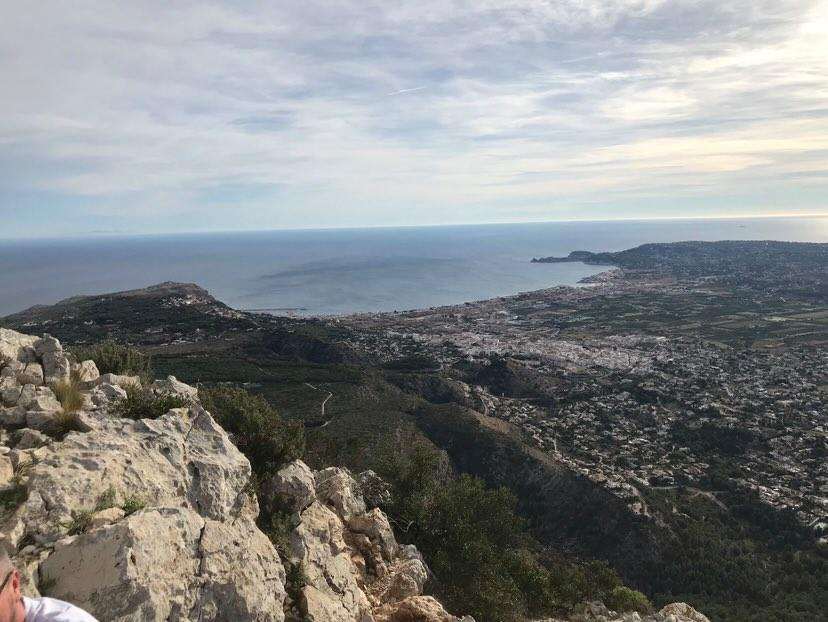
Penyal d’Ifach in Calpe – A challenging climb with spectacular views from the top.
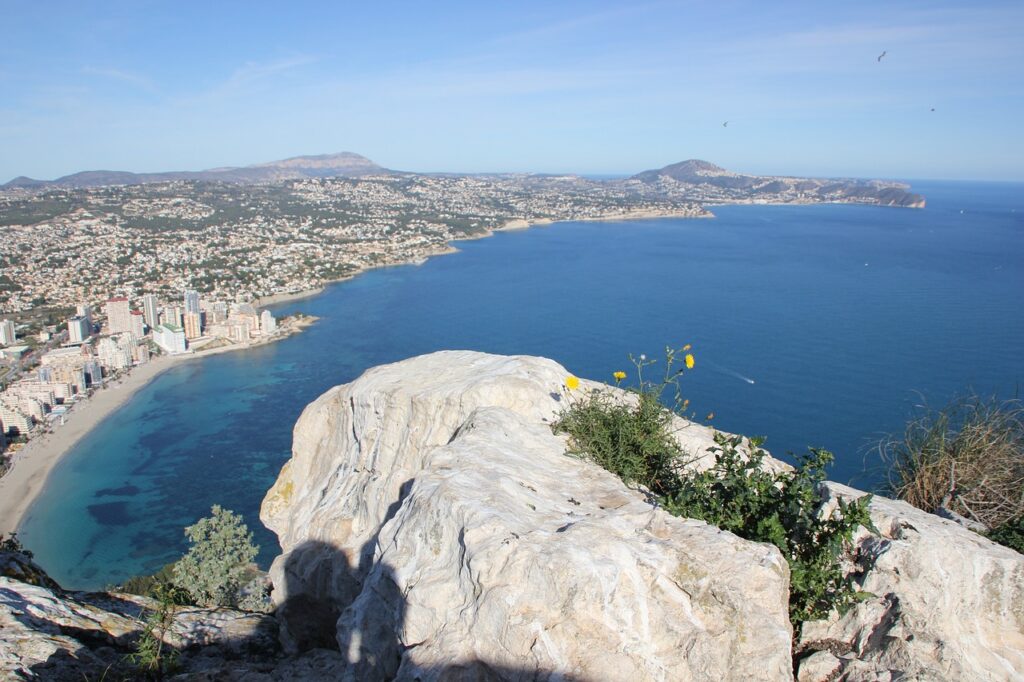
Serra Gelada Natural Park – Beautiful hiking trails with stunning coastal views near Benidorm.
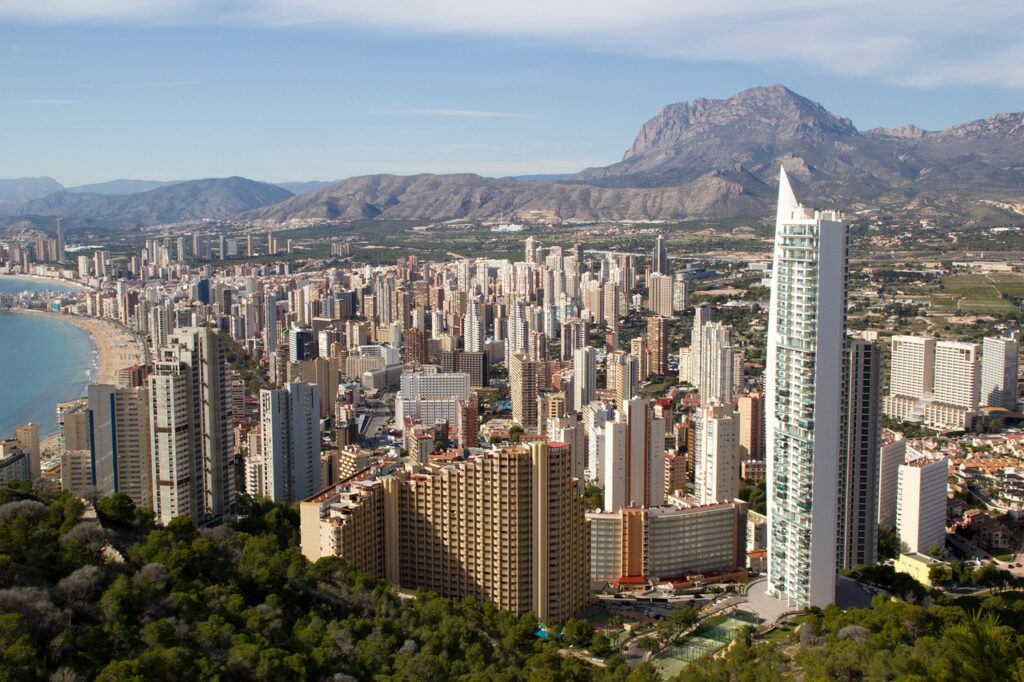
Food and drink
The Costa Blanca has a fantastic food scene. You’ll find everything from traditional Spanish cuisine to international options.
Must-try dishes:
- Paella (the region claims to be the birthplace of this famous dish)
- Fresh seafood, especially in the fishing towns
- Turron (nougat) – a local speciality
- Horchata – a traditional drink made from tiger nuts
Costa Blanca Nightlife
If you’re after nightlife, Benidorm is your best bet – visit the Benidorm English Square. The town has everything from quiet bars to massive clubs, with entertainment continuing until dawn.

Other towns have more subdued nightlife such as Javea, Denia and Moraira, with pleasant bars and restaurants perfect for evening drinks.
Best time to visit the Costa Blanca
The Costa Blanca enjoys over 300 days of sunshine per year, making it a year-round destination.
Summer (June-August) is peak season with temperatures around 30°C. Perfect for beach holidays but expect crowds and higher prices.
Spring (March-May) and Autumn (September-November) are my favourite times to visit. The weather is still warm enough for swimming, but it’s less crowded and more affordable.
Winter (December-February) is mild with temperatures around 15-20°C. Many attractions and restaurants may have reduced hours, but it’s perfect for sightseeing and hiking.
Getting around the Costa Blanca
Car rental is the most flexible option and allows you to visit all the small towns and beaches at your own pace. The roads are excellent, and parking is generally easy outside the main towns.
Public transport is good between major towns. The TRAM system connects Alicante to Benidorm and other towns along the coast.
Taxis are readily available in all resort towns, though they can be expensive for longer journeys.
Practical tips for your Costa Blanca holiday
- Currency: Euro (€)
- Language: Spanish (Castilian) and Valencian, though English is widely spoken in tourist areas
- Tipping: 10% in restaurants is normal, though not mandatory. Greatly appreciated though!
- Siesta: Many smaller shops close from 2-5pm in the summer, so plan accordingly. Most large supermarkets will remain open.
- Dining: Some (not all) restaurants often don’t open for dinner until 8pm or later. Dinner times are much later in Spain!
Planning your Costa Blanca itinerary
3-4 days: Stick to one base like Benidorm or Alicante and take day trips to nearby towns.
1 week: You can visit 2-3 different towns and really get a feel for the region.
2 weeks: Perfect for a proper tour of the Costa Blanca, staying in 3-4 different locations.
I hope this guide helps you plan your perfect Costa Blanca holiday! The region has so much to offer, and I’m sure you’ll fall in love with it just like I have.


